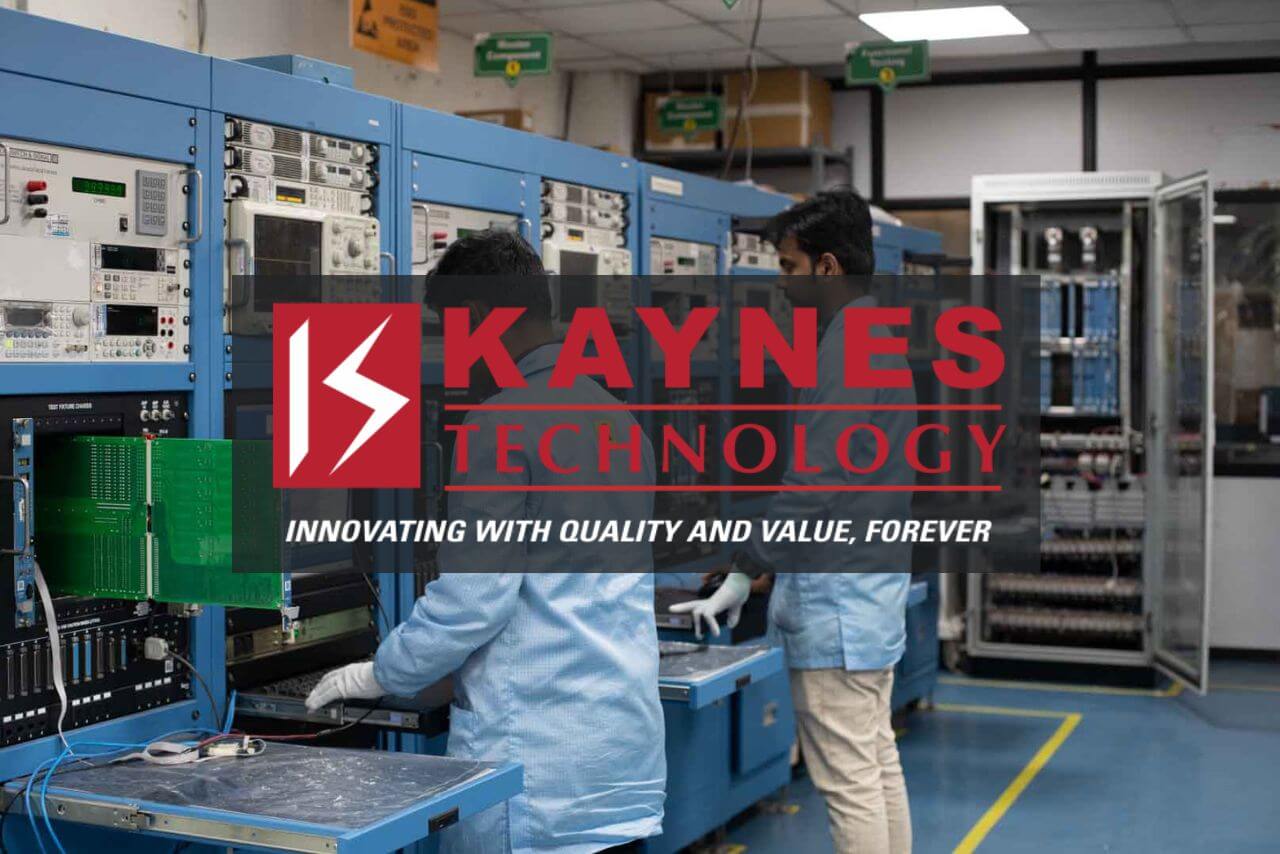Kaynes Technology India raises Rs 257 crore via anchor book ahead of IPO

Know about Kaynes Technology

The leading domestic operator in the Electrical System & Design Manufacture Services Space with a global footprint is Kaynes Technology India Pvt Ltd, Mysore, India. It has five production facilities, including its main plant and an extra one in Mysore, situated in Bangalore, Chennai, Jaisalmer, Parwanoo, & Selaqui. To serve clients from concept to manufacturing, Kaynes also maintains a state-of-the-art design and engineering facility (Kaynes Embedded Systems) in Bangalore.
Customers searching for Pre & Post guaranteed Component level Equipment Repair, Conceptual Design, re-engineering & obsolescence control Services, and Support may go to Mumbai-based Kaynes Electronic Repair, Design, and & Re-Engineering Centers.
In contrast to Mumbai, Kaynes operates Support Services Centers in Bangalore, Delhi, and Cochin. Kaynes also conceptualizes, designs, manufactures and tests highly reliable PCBAs, Box Builds, Products and Systems Engineering Services, Military Coax cable Wiring for defense and aerospace Electronics, as well as all other industrial segments.
The company’s mission is to carve out a specific place in the global market value to its services, serving its clients with honesty and advancing manufacturing technology.
The achievement of excellence via the development of strength in their facilities, systems, and skill sets will result in the happiness of their customers, suppliers, and workers. Vision: To be internationally competitive in the business we are in.
The situation of Kayne’s technology raising funds from anchor book
On November 9, Kaynes Technology India, a manufacturer of electronics, earned Rs 256.89 crore through an anchor book in preparation for its initial public offering (IPO). 28 investors in all took part in the anchor book.
The business has decided to allot 43.76 lakh shareholdings to anchor shareholders at Rs 587 per share after consulting with merchant bankers.
Several investors purchased shares through the anchor book, including Colorado Endeavor, Nomura Trust, Government Sector Retirement Investment Board, Goldman Funds, Icici, Nippon Life India, Polarity Mutual Fund, Allows individual users Capital investment India, Yes bank Trustee, Birla Sun Life, Kerala India Help finance, Whiteoak Capital, Attempt to connect Asset, Abakkus Emerging Possibilities Fund, Franklin India, as well as Tata Mutual Fund.
According to Kaynes’ BSE filing, 17.66 lakh of the 43.76 lakh shares that were allotted to anchor investors were given to domestic mutual funds via a total of 14 different schemes.
On November 10, Kaynes Technologies India will begin accepting subscriptions for its Rs 858 crore public offering, with a price range of Rs 559-587 for each share. The deadline for the offer is November 14. The first public offering consists of a fresh share issuance worth Rs 530 crore and a selling shareholder’s offer to sell shares value Of Rs 327.8 crore.
The proceeds from the latest offer would be used by the firm to pay off debts and expand the current production facilities in Mysore, Karnataka, and Manesar, Haryana. Additionally, it would invest in Kaynes Electronics Manufacturing, a subsidiary, to build a new plant in Chamarajanagar, Karnataka, and use the money for working capital needs.
A leading end-to-end & IoT solution to various integrated electronics manufacturing firms with skills spanning the full spectrum of electronic system design and production services, Kaynes Technology India was founded in 2008.
Who are Anchor investors, and their benefits?
:max_bytes(150000):strip_icc()/GettyImages-1045262938-d6e77886128f4b05b3b4b4e3daef781a.jpg)
Famous institutional investor wealth, mutual funds, and pension funds are invited to sign up for shares before the IPO to increase the issue’s visibility and inspire confidence in potential IPO investors. These investors are referred to as anchor investors or core element known internationally.
The advantage of filing for an anchor quota is that institutional investors will receive a guaranteed allocation. The amount of times the offer is subscribed to determines how many shares are allocated to investors that apply for an IPO. However, unlike IPO participants who are permitted to buy on listing day, anchor investors are unable to dispose of their shares for such a period of thirty days following the date of allotment.

The laws about anchor investors have undergone several adjustments in the previous two years, according to the capital market regulator Sebi. The anchor investor quota was increased by the market regulator last year, and the cap on the largest amount of anchor investors was abolished early this year. An issuer may now distribute to anchor investors up to 60% of the shares to qualifying institutional buyers (QIBs). Anchor investors may purchase up to 30 percent of an IPO, with the QIB share of an IPO normally being 50%.
A day before an IPO starts, anchor allotment is completed. The issuer or banker can feel many anchor investors are involved since about a third of an IPO is already covered before the first trading day. According to experts, a strong anchor investors a great deal of reassurance since it shows the confidence that institutional investors have in the security.
Sebi lifted the 25 anchoring investor limit for IPOs over Rs 250 crore in a circular in September. The number of anchor investors that investment bankers may now attract is unlimited. In contrast to an IPO, when the allocation must be done proportionately, the allocation to anchor shareholders is handled on a paid basis.
Kaynes Tech Rs 858 Crore IPO to Launch on November 10
Technology Kaynes The public may start subscribing to India’s Rs 858 cr IPO on November 10. The provider of integrated electronics solutions for the Internet of Things (IoT) has set the price range for its first public offering at Rs 559 – Rs 587 each share. The deadline for this offering is November 14. In multiples of 25, investors may make a bid for at least 25 shares.
The IPO consists of a 530 crore rupee new share offering and a selling offering of up to 328 crore rupees from the founders and current shareholders. A pre-IPO investment of up to 130 crores has also been done by the firm, comprising a private equity fund of Rs 80 cr in the form of shares with Acacia Banyan Partners as well as a placing of Rs 50 crore with Volrado Ventures Partners Fund.
Original equipment manufacturers may obtain design-driven electronics manufacturing services from Kaynes Technology. Kaynes Technology competes against Dixon Technology India, Syrma SGS Technology, and Amber Enterprises India in the go-to-market sector.
Kaynes Technology has orders of Rs. 2,266.26 crores as of June 30, 2022. In FY22, the firm reported an after-tax profit of Rs 41.68 crore, up from Rs 9.73 crore the year before, while sales increased 67.9% at Rs 706.24 crore and Rs 420.63 crore. The bankers on this matter are IIFL Securities and DAM Capital Advisors.
What is pre-IPO, and why is Kayne’s technology in it?
When a business offers its shares to the public for the first time, it does so through IPO. The shares, which were formerly owned by firm officials, are given to capital that corporate debt consolidation or business expansion. When the IPO procedure is over, the business is deemed publicly listed and its shares are then available for open-market trading.
The act of purchasing stock in a private or public firm before it makes a Public Offering Offer is known as pre-IPO investing. Companies need a lot of money even before going public to grow and build a clientele. Pre-IPO investing is the practice of investing this money.
Pre-IPO investment used to be regarded as complicated since it required a thorough understanding of the financial sector and the present market structure. Consequently, only private equity firms, banks, venture capital firms, etc., could invest in enterprises before they went public. But now, it’s accessible to everyone, especially small-scale investors.
Importance:
You might have heard of firms going public through initial public offers if you regularly monitor stock market news. Investors apply for and wait in anticipation of being assigned to strong IPOs since they may bring in significant and rapid returns in only one week. IPOs are a terrific option for individual investors to enjoy listing gains or retain the stock for a long time to make larger profits because the investment is also minimal.
However, there are other stories about investors who purchased stock in the firm before its first public offering (IPO) and made enormous profits. They are the individuals who occasionally become millionaires as a result of a company’s successful IPO.
Why not invest in the firm before the IPO to magnify the returns by a significant margin as retail investors always consider applying in a company’s IPO after a comprehensive investigation and believe it has great profit potential?
Pre-IPO investment can help with all of that. But you must have a basic understanding of an initial public offering to know how to invest in businesses before one.
How will pre-IPO investment work for Kaynes Technology
Companies do not initiate an IPO before achieving specific commercial objectives. To get a better return on their investments than purchasing the company’s stocks on the open market, they solicit money from investors before the IPO.
Consider the following thorough illustration to have a better understanding of pre-IPO investing:
Consider making a pre-IPO investment in ABC Company by purchasing 100 shares for Rs 2,000 each. You will provide Rs 2,00000,000 to ABC Company through this transaction, which they may utilize for whatever commercial reason. Currently, the firm may have risen in value, with the price of one unit rising to Rs 3,500 when it ultimately decides to go public.
You may sell all 100 of your shares to the public at the IPO, where the firm is offering one unit for Rs 3,500, or you can keep the stocks again for the long term if you think they will reopen at a premium. Now, the following two situations might happen now of the IPO.
Edited by Prakriti Arora




